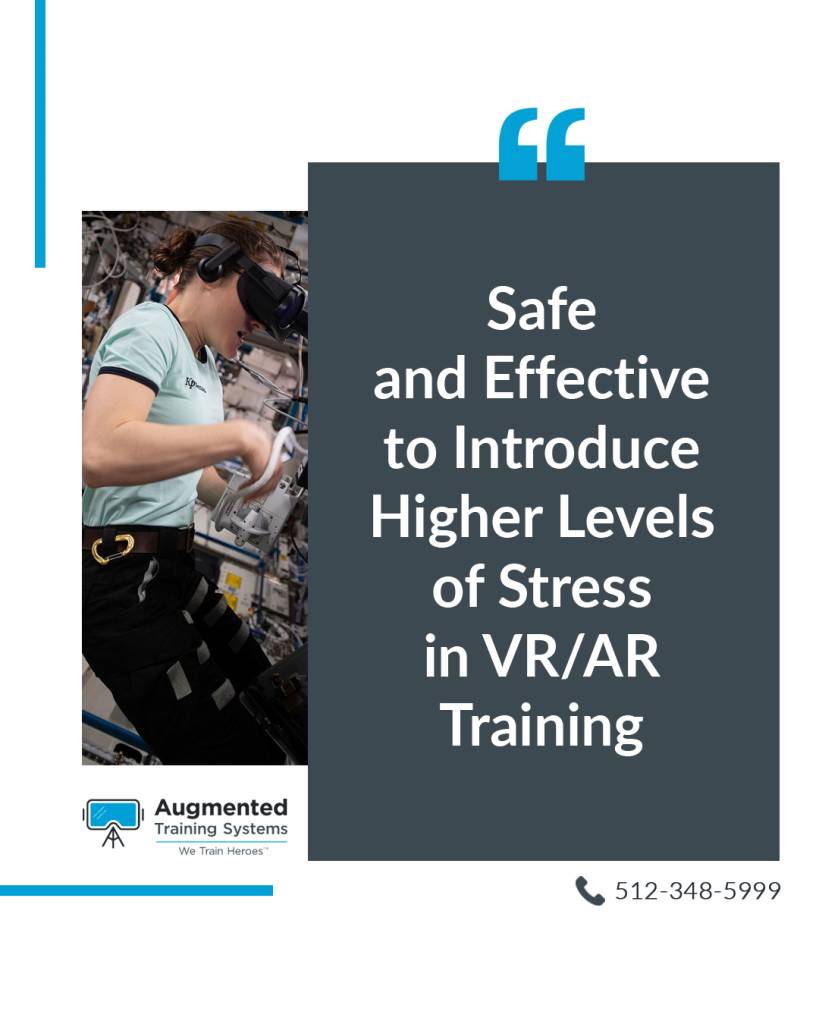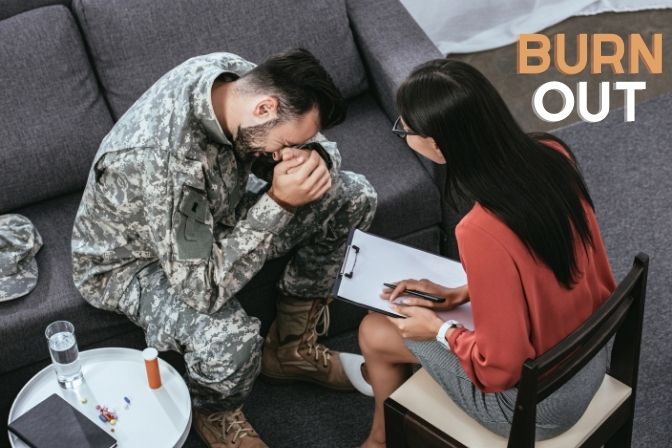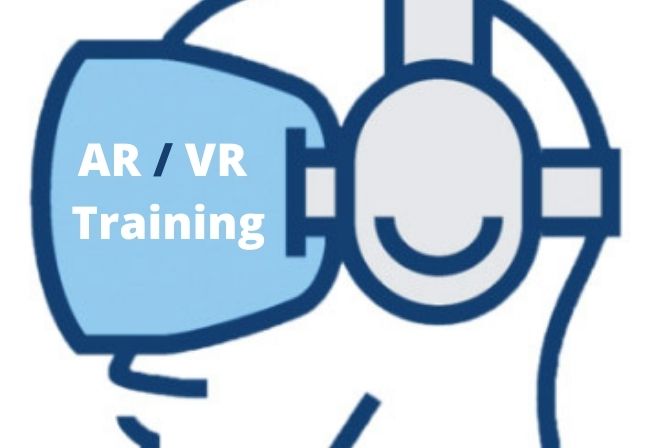Virtual Reality (VR) and Augmented Reality (AR) have become the new frontier in emergency response training.
Emergency responders are able to train on these new technologies that are safer, more realistic, and less expensive than traditional methods.
Topics that will be covered:
- A safer place to fail with VR
- Physically safer platform to train with VR
- Emotionally safer platform to train with VR
- Adding realism to traditional training with VR
- Applying classroom knowledge to VR training
- Preparing for live training with VR
- AR/VR provides diversity in training

Train your first responders more effectively!
A safer and immersive way to train emergency responders
“What does Virtual Reality Training do for first responders?”
Some people may ask this question, and it is an important one. First responders face dangerous situations all the time, and they need to know how to react if the case were to happen again.
The problem is that not all training methods are safe or realistic enough for these professionals to enter into an immersive experience that provides the valuable training environment to sufficiently prepare them for these situations.
Virtual reality training provides a safer place for them to fail without risking anyone’s life in the process and provides a more realistic environment than traditional classrooms. This blog will cover some of the benefits of using VR technology in first responder training to improve training safety and security.
A safer place to fail
Creating An Environment That’s Safe For First Responders
A tremendous benefit of the AR/VR training platform is its accessibility and repeatability. Those variables are crucial in training programs, where people need to be able to practice the same scenario over and over again. They need that ability to learn from their mistakes without harming themselves or anyone else in the process.
Virtual reality provides a safer environment where first responders are not physically at risk if something happens during training. We do not doubt that traditional training is safe. Still, it cannot replicate these potentially life-threatening situations with the ability to fail and learn from that failure without actually risking injury.

Physically Safer Platform To Train
Keeping First Responders Healthy Is More Than Just Eating Healthy Foods
We know that keeping your trainees healthy is more than just eating healthy foods and working out. They need an environment where they can train safely. Virtual reality is a safer platform to train than traditional training. This safety allows trainers to create intense or dangerous situations which mimic real life without the consequences that could result in real life training.

For example, if a first responder experience extreme exhaustion during an incident, this could put others at risk and add too the individual’s traumatic experience. These nuanced scenarios are possible now. Trainees can also see themselves from different angles, which is essential since they need to know how they react when performing actions on the field.
The platform offers an excellent opportunity because it has a much lower risk of injury and creates more opportunities for realistic scenarios than other types of physical learning experiences, such as role-playing activities where instructors use a lot of resources to simulate scenarios related to conflict zones without putting people in any danger whatsoever.
Virtual reality simulators allow learners to observe how well prepared they are by virtually experiencing various possible conditions before going into action, so every individual has confidence in their performance!
Emotionally Safer Place To Train
Reduce The Potential For Secondary Traumatic Stress
We want to keep our first responders safe and far from harm. A part of doing that is making sure that we prepare them emotionally and mentally for the job. Stress levels are high and mental health is often a concern. How do we prepare them for this? High-stress training is necessary, but it’s essential to keep them in a safe environment while monitoring the trainee’s mental performance.

Virtual reality provides an excellent platform for this type of learning experience by allowing trainers to introduce these high-stress situations to their trainees with the ability to observe and monitor variables like their stress reactions and emotional stability during high-stress conditions.
With more information to work with, trainers will be able to address any early signs of potential burnout and recognize any potential symptoms of depression. We are committed to assisting in taking care of our first responder mental health, which is why we believe this platform will indefinitely help prepare responders for managing stress in the field and reduce burnout.
Adding Realism To Traditional Training Methods
Make Education Feel Like More Than a Textbook!
Virtual reality is a fast-growing technology in emergency response training. Traditional training methods often involve watching videos, reading manuals, listening to lectures, and completing exercises.
With virtual reality, they can process their education more excitingly and efficiently. Using VR to keep your first responder sharp will prevent the knowledge they learn in the classroom from degrading over time. That way, the time spent learning is maximized for their performance!

Preparing for live training with VR training
Come in Ready and Confident
If you are in the emergency services industry, you know that being prepared is key to success. One of the newest ways to stay up-to-date with training and skills development is through virtual reality. There are large-scale events for first responder training, but these events happen a couple of times of the year and are a lot to try and a lot of information to retain immediately.
The significant part of VR is your trainees can do “pre-lesson learning” for events like these. First responders will come into any event with a solid foundation of immersive visual knowledge, making them incredibly more confident and prepared to get the most out of any in-person training they take.
AR/VR Provides More Diversity
Make Sure Your Training For Your Needs!
We know that the best way to prepare for a scenario is by practicing and training for emergency response incidents. Currently, there are many types of simulation tools used to train emergency responders; however, these simulations lack the diversity of an actual emergency incident.
This is where augmented reality and virtual reality come into play! These new technologies provide more diversity for realistic scenarios such as fires or medical emergencies. For example, you can use VR to simulate a car crash or a patient that needs CPR.

The virtual platform lets us customize your training to your needs. Whether that’s your geographical training needs or running different sequences your team might encounter in your line of emergency response, trainers will be able to set the level of difficulty to test their trainee’s capabilities under different levels of stress. You can even set how many team members you want training together at a time for better team coordination.
In practice, this could look like a customized training program for wildland firefighters, a law enforcement program focused on the buddy system, or a replicated call to a substance abuse situation.
We Hope You Consider AR/VR For Your Training
In Any Local, State and Federal Emergency Management Agency
We hope you’ve found the information in this blog post informative and interesting. If you are looking for a safe, realistic training platform that is also more cost-effective than traditional classroom learning, AR/VR may be perfect for your company. Contact us to learn more about how our innovative VR/AR technology can help support your business goals today!




